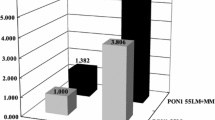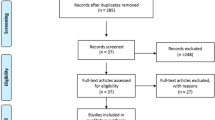Abstract
We previously reported the polymorphism of the high density lipoprotein-associated enzyme paraoxonase (PON1), in the 10 sarin poisoning victims in the Tokyo subway terrorist attack. Arg192 PON1, which has low sarin hydrolysing activity, was found to be more common in the Japanese population than in people of other races. However, from our analyses seven of the victims expressed the PON1 phenotype with high sarin hydrolysing activity and three with low sarin hydrolysing activity. These results indicate that the main factor contributing to the tragedy of the Tokyo subway terrorist attack was the high toxicity of sarin rather than the race-dependent genetic difference in the Arg192 PON1 polymorphism.
Similar content being viewed by others
Author information
Authors and Affiliations
Additional information
Received: 29 August 2000 / Accepted: 7 March 2001
Rights and permissions
About this article
Cite this article
Yamada, Y., Takatori, T., Nagao, M. et al. Expression of paraoxonase isoform did not confer protection from acute sarin poisoning in the Tokyo subway terrorist attack. Int J Leg Med 115, 82–84 (2001). https://doi.org/10.1007/s004140100226
Issue Date:
DOI: https://doi.org/10.1007/s004140100226




